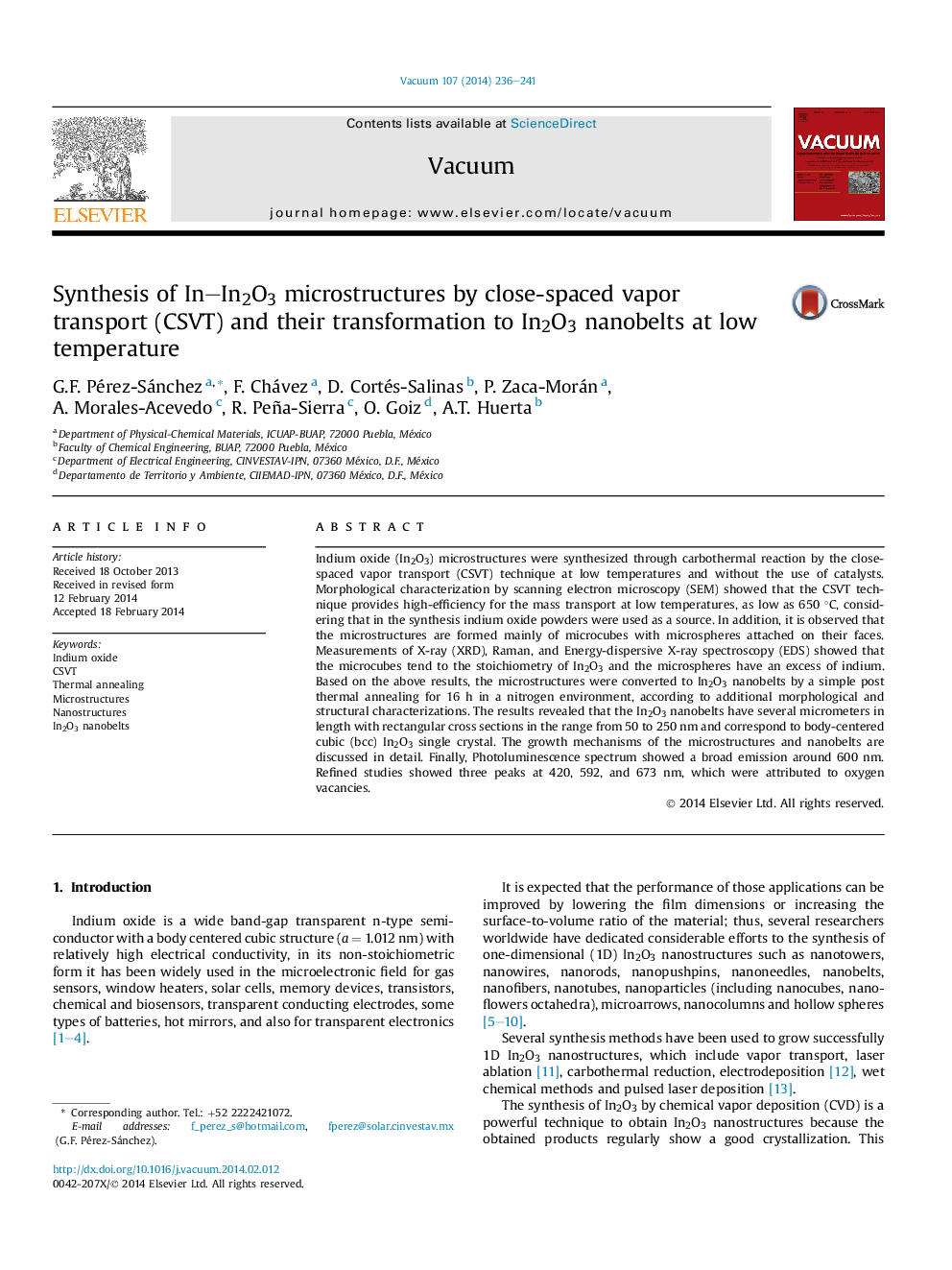| Article ID | Journal | Published Year | Pages | File Type |
|---|---|---|---|---|
| 1690032 | Vacuum | 2014 | 6 Pages |
Abstract
Indium oxide (In2O3) microstructures were synthesized through carbothermal reaction by the close-spaced vapor transport (CSVT) technique at low temperatures and without the use of catalysts. Morphological characterization by scanning electron microscopy (SEM) showed that the CSVT technique provides high-efficiency for the mass transport at low temperatures, as low as 650 °C, considering that in the synthesis indium oxide powders were used as a source. In addition, it is observed that the microstructures are formed mainly of microcubes with microspheres attached on their faces. Measurements of X-ray (XRD), Raman, and Energy-dispersive X-ray spectroscopy (EDS) showed that the microcubes tend to the stoichiometry of In2O3 and the microspheres have an excess of indium. Based on the above results, the microstructures were converted to In2O3 nanobelts by a simple post thermal annealing for 16 h in a nitrogen environment, according to additional morphological and structural characterizations. The results revealed that the In2O3 nanobelts have several micrometers in length with rectangular cross sections in the range from 50 to 250 nm and correspond to body-centered cubic (bcc) In2O3 single crystal. The growth mechanisms of the microstructures and nanobelts are discussed in detail. Finally, Photoluminescence spectrum showed a broad emission around 600 nm. Refined studies showed three peaks at 420, 592, and 673 nm, which were attributed to oxygen vacancies.
Related Topics
Physical Sciences and Engineering
Materials Science
Surfaces, Coatings and Films
Authors
G.F. Pérez-Sánchez, F. Chávez, D. Cortés-Salinas, P. Zaca-Morán, A. Morales-Acevedo, R. Peña-Sierra, O. Goiz, A.T. Huerta,
